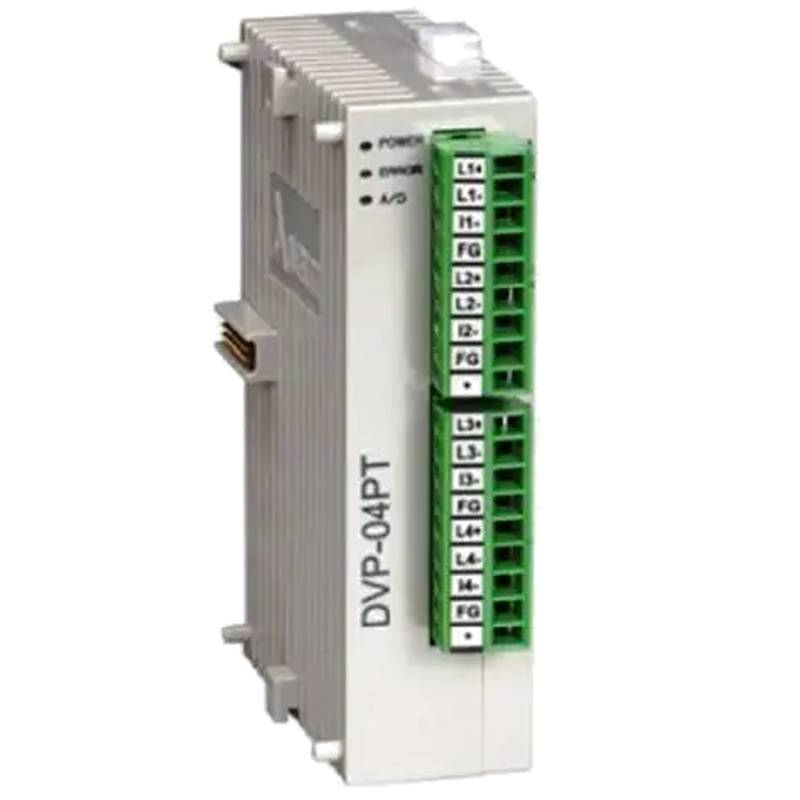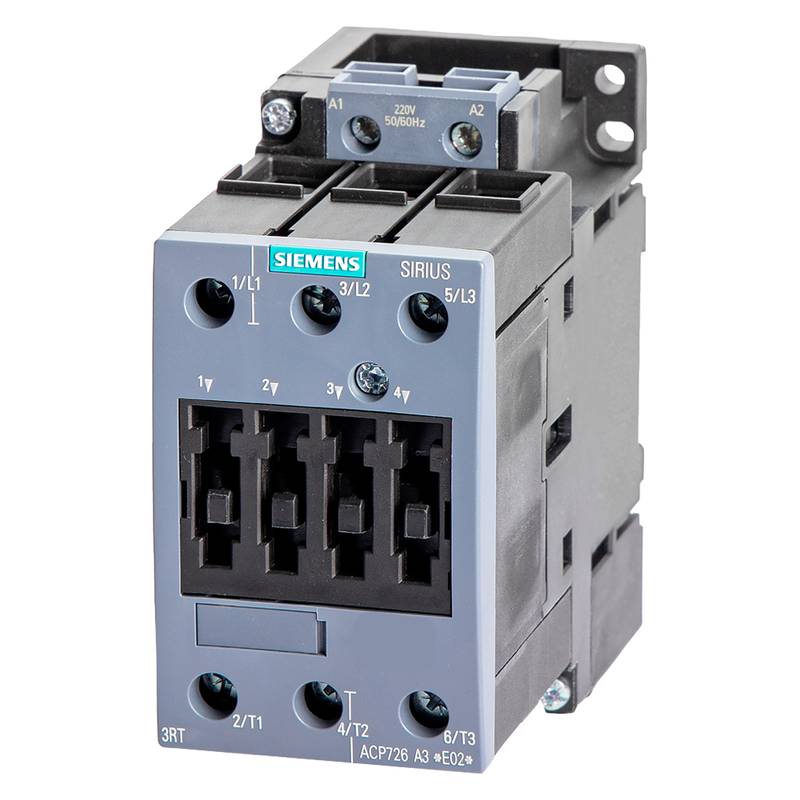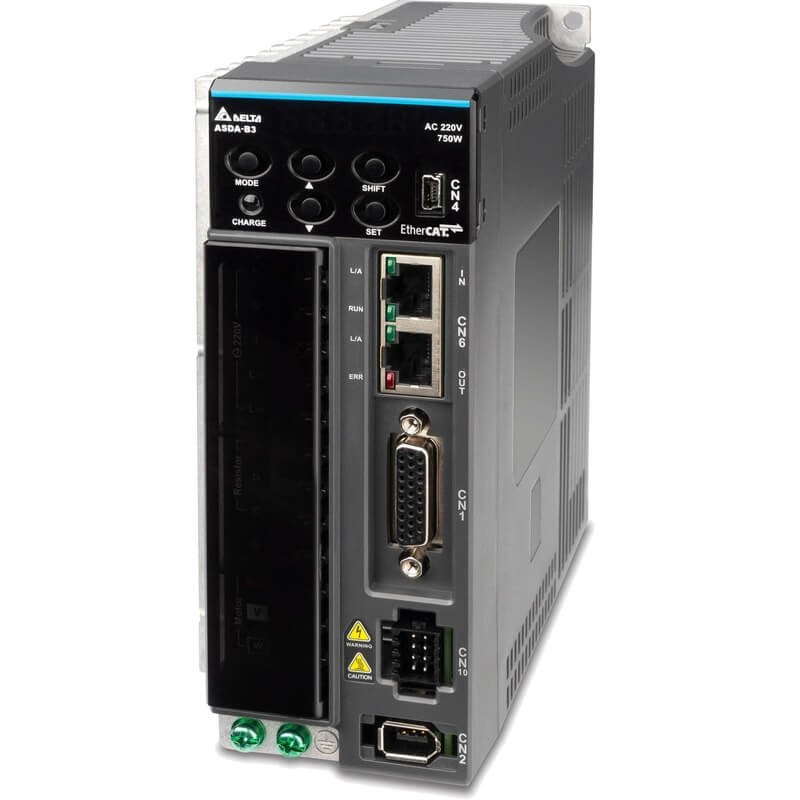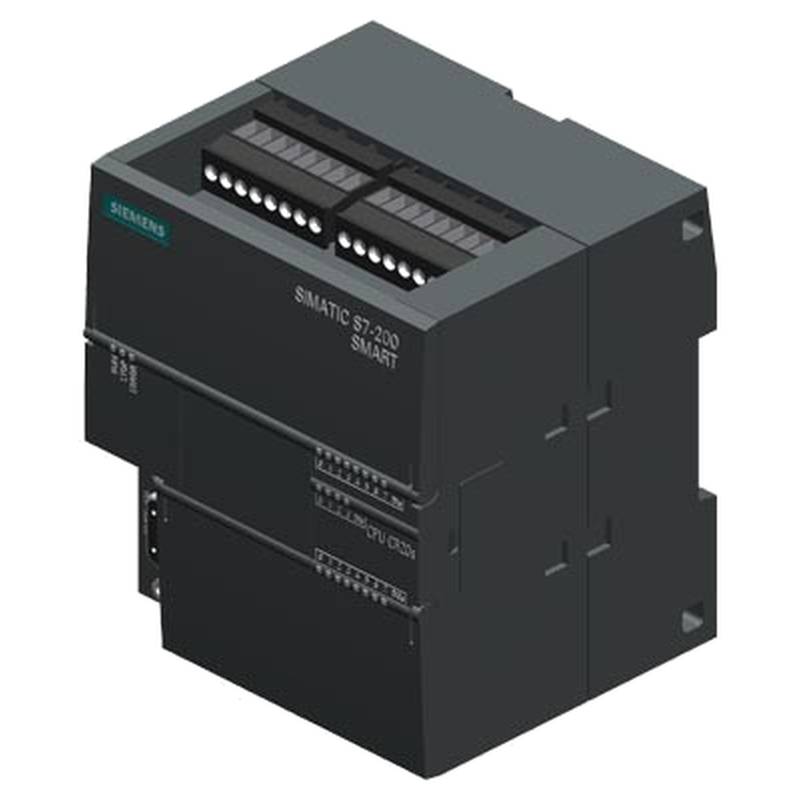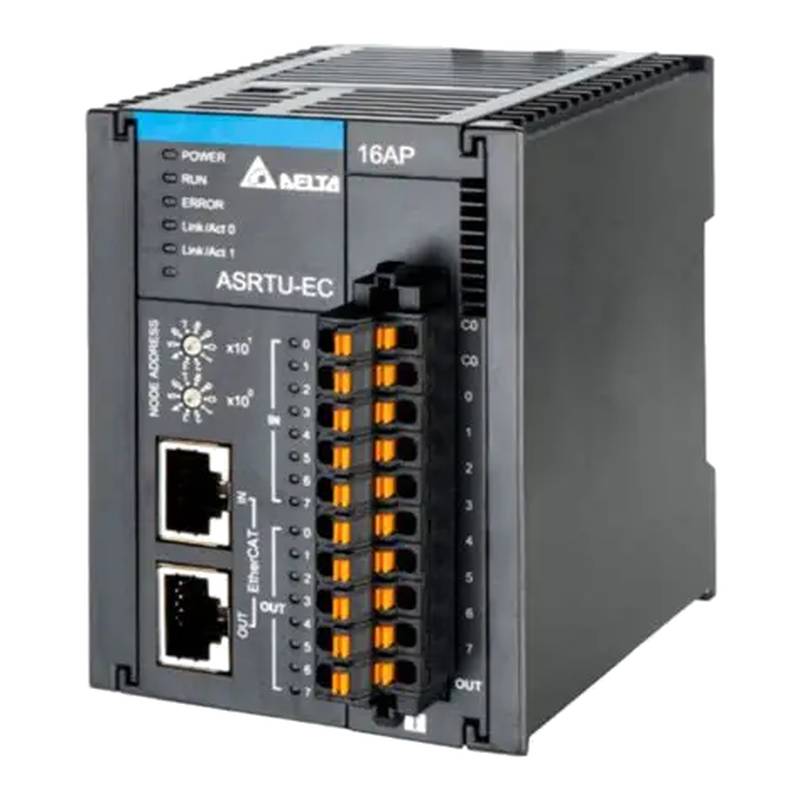
The Siemens 1FL6061-1AC61-2LG1 is a cutting-edge servo motor engineered for demanding industrial automation tasks. This high-speed, high-power, low-inertia motor excels in applications requiring precise and rapid motion control. Its core advantages lie in its exceptional dynamic performance, robust construction, and seamless integration capabilities within Siemens' comprehensive automation ecosystem. Key technical parameters include a rated power of 4 kW, a nominal speed of 6000 rpm, and a remarkably low rotor inertia of 0.0017 kgm², enabling swift acceleration and deceleration for optimized cycle times.
Product Specifications
| Specification | Value |
| :-------------------- | :----------------------------------- |
| Motor Type | Synchronous Servo Motor |
| Series | SIMOTICS 1FL6 |
| Part Number | 1FL6061-1AC61-2LG1 |
| Rated Power | 4 kW |
| Nominal Speed | 6000 rpm |
| Max Speed | 9000 rpm |
| Rated Torque | 6.37 Nm |
| Max Torque | 17 Nm |
| Rotor Inertia | 0.0017 kgm² |
| Voltage | 400V (derived from typical usage) |
| Protection Class | IP65 |
| Shaft | Smooth shaft with shaft seal ring |
| Flange | Size IML 71 |
| Cooling | Self-cooled |
| Encoder | 22-bit Multi-turn Encoder |
| Connector | Connectors for power and encoder |
Core Features & Market Positioning
The Siemens 1FL6061-1AC61-2LG1 distinguishes itself through its inherent low inertia, a critical attribute for applications demanding rapid acceleration and deceleration capabilities. This characteristic translates directly into shorter cycle times and enhanced productivity, positioning it as a superior choice for high-performance motion control. Its high power density ensures robust performance even in compact installations. Furthermore, its integration with Siemens' SINAMICS and SIMODRIVE drives provides a cohesive and optimized system solution, reducing engineering complexity and enhancing overall system reliability. Industry experts often highlight its precision and responsiveness as key differentiators in competitive automation landscapes.
Key Application Scenarios
This high-performance servo motor finds optimal application in industries requiring extreme precision and rapid, dynamic movements. This includes high-speed pick-and-place operations in electronics manufacturing, sophisticated material handling systems, automated assembly lines where quick tool changes are paramount, and advanced packaging machinery. Its ability to handle frequent accelerations and decelerations makes it ideal for robotics, particularly in collaborative robot (cobot) applications and industrial robotic arms that require precise path following and swift response times. The 4 kW power rating and 6000 rpm nominal speed are well-suited for demanding tasks such as high-speed cutting, grinding, and laser processing.
Practical System Integration Guidance
Integrating the Siemens 1FL6061-1AC61-2LG1 into an automation system typically involves connecting it to a compatible Siemens drive, such as a SINAMICS S120 or S210. Power and encoder connections are facilitated through standard, robust connectors, simplifying wiring. Proper grounding and shielding of cables are crucial to prevent electromagnetic interference, ensuring signal integrity and reliable operation. Commissioning requires configuring the motor parameters within the drive controller, including pole count, encoder type, and thermal model, to achieve optimal performance and safety. Referencing the specific drive's technical documentation for detailed parameterization and wiring diagrams is essential.
Operation and Risk Mitigation
Safe operation of the Siemens 1FL6061-1AC61-2LG1 necessitates adherence to established industrial safety standards. This includes ensuring proper guarding of moving parts, implementing emergency stop procedures, and confirming that the drive's safety functions are correctly configured and tested. Overheating is a potential risk, which can be mitigated by ensuring adequate ventilation and by not exceeding the motor's continuous torque and speed ratings. Fault codes displayed on the connected Siemens drive provide critical diagnostic information. Common troubleshooting may involve checking connections, verifying parameter settings, and ensuring the motor is within its operational temperature limits.
Scalability & Long-Term Value
The Siemens 1FL6061-1AC61-2LG1 offers significant long-term value through its compatibility with Siemens' extensive automation portfolio. This allows for seamless integration into larger, more complex automated systems and provides clear upgrade paths. As industrial processes evolve, this motor can be readily incorporated into new machine designs or retrofitted into existing equipment that demands enhanced performance. Its robust design and the availability of comprehensive technical support from Siemens contribute to a lower total cost of ownership. Furthermore, its suitability for integration with Industrial Internet of Things (IIoT) platforms enables advanced monitoring, predictive maintenance, and data-driven optimization strategies.
Frequently Asked Questions
What is the primary advantage of the Siemens 1FL6061-1AC61-2LG1 motor?
Its extremely low inertia allows for rapid acceleration and deceleration. This directly translates to reduced cycle times in high-throughput automated processes. The motor's design prioritizes dynamic response for precision motion control applications.
The high power density of this servo motor is another significant advantage. It delivers substantial performance within a compact form factor. This makes it suitable for space-constrained machine designs where performance cannot be compromised.
Furthermore, its seamless integration with Siemens' control systems offers a cohesive and optimized solution. This simplifies engineering and enhances overall system reliability and efficiency.
How does the low inertia of the 1FL6061-1AC61-2LG1 benefit automation systems?
Low inertia is crucial for applications requiring fast, precise movements. It enables the motor to change speed and direction almost instantaneously. This is critical for high-speed pick-and-place, robotics, and automated assembly.
By reducing the time needed for acceleration and deceleration, overall cycle times are significantly shortened. This directly increases manufacturing throughput and productivity. It allows machines to perform more operations in the same amount of time.
The precise control afforded by low inertia also leads to improved accuracy and repeatability. This is essential for tasks demanding high precision, such as in electronics manufacturing or intricate machining operations.
What are common applications for the Siemens 1FL6061-1AC61-2LG1 motor?
This motor is ideal for high-speed automation tasks requiring quick and accurate motion. Examples include pick-and-place robots, automated packaging machinery, and high-precision material handling systems. Its dynamic capabilities excel in these environments.
Robotics is a major application area, including industrial robot arms and collaborative robots. It enables precise path following and rapid response for complex manipulation tasks. Its performance is crucial for maintaining efficiency and safety.
Other suitable applications include high-speed CNC machining, laser cutting, and automated assembly lines. Any process demanding rapid acceleration, deceleration, and precise positioning can benefit from its features.
What type of encoder is used with the Siemens 1FL6061-1AC61-2LG1?
The motor is equipped with a 22-bit multi-turn encoder. This provides very high resolution for precise position feedback. The multi-turn capability allows it to track position even across multiple revolutions without losing count.
This high-resolution encoder ensures accurate motion control and feedback. It is essential for applications requiring fine adjustments and repeatable positioning. The 22-bit resolution offers a vast number of discrete steps per revolution.
The encoder's specification ensures it aligns with the dynamic performance capabilities of the motor. It provides the necessary data for sophisticated control algorithms within the connected drive.
How is the Siemens 1FL6061-1AC61-2LG1 integrated into a control system?
Integration typically involves connecting the motor to a compatible Siemens drive, such as a SINAMICS S120 or S210. Power and encoder signals are routed via dedicated connectors. Careful attention to cable shielding and grounding is vital.
Configuration within the drive controller is a key step. This includes setting motor-specific parameters like pole count, encoder type, and thermal characteristics. Proper parameterization ensures optimal performance and safety.
Following the drive's technical documentation for wiring and parameter setup is critical. This ensures a robust and reliable connection for accurate motion control. It simplifies the engineering process.
What safety considerations are important when operating this motor?
Adherence to industrial safety standards is paramount. This includes implementing proper machine guarding, reliable emergency stop systems, and verifying safety function configurations in the drive. Always ensure the machine's overall safety design is robust.
Operating within the motor's specified torque and speed limits is crucial to prevent overheating and potential damage. Ensure adequate ventilation and consider the motor's thermal model during system design. Continuous monitoring is advised for demanding applications.
Regular inspection of electrical connections and mechanical integrity helps prevent failures. Training personnel on safe operating procedures and emergency responses is also a critical safety measure.
What are the typical fault codes associated with this motor?
Fault codes are generated and displayed by the connected Siemens drive, not the motor itself. Common drive-related faults might indicate overcurrent, overvoltage, undervoltage, or overtemperature conditions. Refer to the specific drive's manual for a complete list.
Specific motor-related issues, often reflected as drive faults, could include encoder faults (e.g., B100 or B101 for incremental encoder errors, B105 for encoder communication loss). These point to issues with the feedback system or its connection.
Other potential faults might arise from incorrect motor parameterization or exceeding the motor's operational limits, leading to drive-level protection triggers. Accurate diagnosis requires consulting the drive's error log and the motor's specifications.
Can this motor be used with older Siemens drive systems?
Compatibility depends on the specific older drive system. Siemens' newer drive platforms (like SINAMICS S120/S210) are designed for seamless integration. Older systems, such as SIMODRIVE 611D, might require specific interface modules or may not support the full feature set.
While older systems might provide basic motion control, they may not fully leverage the advanced features of the 1FL6 series motor, such as its high dynamic response and advanced encoder capabilities. Performance optimization is often best achieved with contemporary drive technology.
Consulting Siemens' compatibility matrices or contacting technical support is the most reliable method to determine suitability for a specific older drive generation. This ensures proper functionality and avoids potential integration issues.
What is the recommended method for cooling this motor?
The Siemens 1FL6061-1AC61-2LG1 is designed as a self-cooled motor. This means it relies on its integrated cooling fins and the airflow generated by its rotating shaft for heat dissipation. Ensuring adequate free space around the motor for unimpeded airflow is crucial for effective cooling.
For applications where the motor operates continuously at high loads or in ambient temperatures exceeding standard industrial ranges, additional cooling may be necessary. This could involve forced ventilation, such as external fans directed at the motor, or mounting the motor in a location that promotes better natural airflow.
Proper ventilation is critical for maintaining performance and extending the motor's lifespan. Obstructions or confined spaces that limit airflow can lead to overheating, reducing efficiency and potentially causing component failure.
How does the Siemens 1FL6061-1AC61-2LG1 compare to other low-inertia motors on the market?
This motor stands out due to its combination of high power (4 kW) and exceptionally low inertia (0.0017 kgm²), enabling superior dynamic performance. Its integration within the Siemens ecosystem provides a significant advantage for users already invested in their automation solutions, offering seamless compatibility and advanced diagnostic capabilities.
Compared to competitors, the 1FL6061-1AC61-2LG1 often provides a more robust build quality and higher peak torque capabilities for its size. The precision of its 22-bit multi-turn encoder also offers enhanced feedback accuracy, crucial for demanding servo applications that require high repeatability and smooth motion.
While other manufacturers offer low-inertia motors, Siemens' strength lies in its complete system approach. This includes the motor, drive, and control software working in concert, often leading to simplified commissioning, superior performance tuning, and reliable long-term operation with comprehensive support.
















